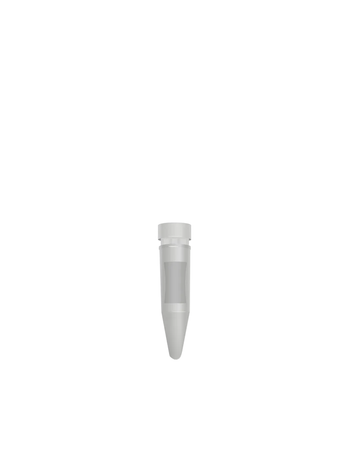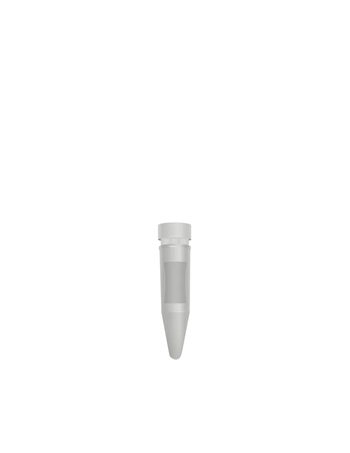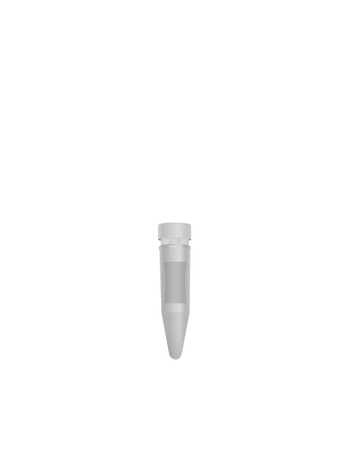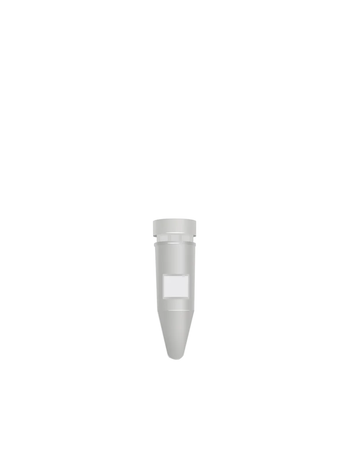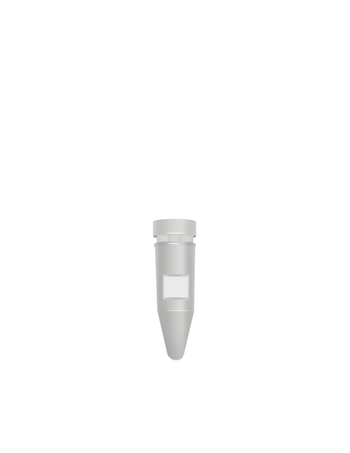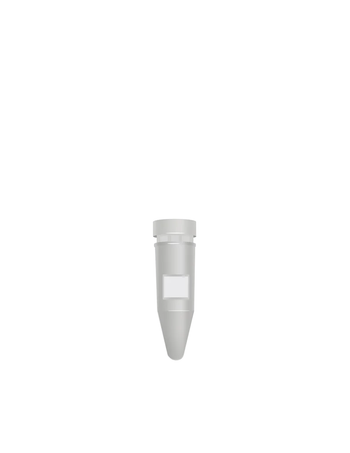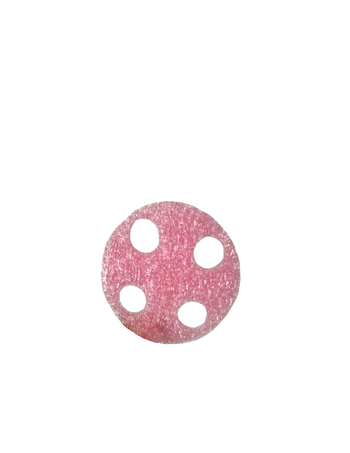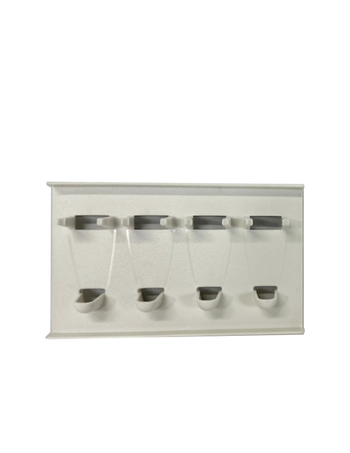
- Item Description
- Specifications
- Protocol
- Technical Information
- Accessories
- MWCO: 12KDa
- FlexTube Volume: 3ml
- Dialysis Volume: 0.1-3ml
- Minimum Sample Size for Extraction: 20µg
- Maximum Gel Slice: 2cm x 1cm
- Comes with (2) MAXI FlexTubes and (1) Electro-elution Support Tray (3-place)
IBI MAXI FlexTubes (dialysis tubes) are typically used for the following applications: dialysis, gel extraction, electro-elution, and de-salting. The design of the FlexTube allows for easy loading and unloading with a standard pipette tip and screw-cap top. Multiple tubes can be placed in one buffer tank for high-throughput applications with minimal hands-on time.
The FlexTube membrane is constructed of regenerated cellulose and is 18 - 42µm thick. The membrane dimensions for the MAXI FlexTube is 1.4 x 2cm.
For the MAXI FlexTube, the minimum sample size is 20µg, the maximum gel slice is 2cm x 1cm, and the dialysis volume is 0.1 – 3ml. The MAXI FlexTube is offered with the following Molecular Weight Cut-Offs (MWCO): 3.5KDa, 6KDa, 12KDa, 25KDa, or 50KDa.
When used for dialysis or buffer exchange, the MAXI FlexTubes can be used with DNA, RNA, proteins, and Oligonucleotides (>15nt) for small volumes of 0.1–3mL. Simply load the sample into the tube with a standard pipette, load into the FlexTube float, and place in a stirred beaker of desired buffer. The ease of use of IBI FlexTubes is much greater than that of dialysis tubing and cassettes.
When used for gel extraction, the FlexTubes can be used with proteins, RNA, DNA, or oligonucleotides (>20nt) from polyacrylamide, agarose, or any other gel matrix in a running buffer. The tubes are ideal for protein-nucleic acid complexes and large size DNA fragments (>100Kb) from agarose or polyacrylamide gels. A typical extraction for a 50KDa molecule in a MAXI FlexTube is approximately 80 minutes. DNA recovery from polyacrylamide or agarose gels is typically greater than 90%. See manual for more approximate times.
Isolation of proteins from a gel using the FlexTube delivers up to 70% recovery yield. After the protein gel extraction, the sample can remain in the tube for SDS removal*. The combination of SDS-PAGE, electro-elution with the FlexTube, and SDS removal buffer can give you a more accurate determination of a protein’s molecular mass due to the high recovery yield and purity of the sample. This also results in a MALDI-MS analysis with greater sensitivity**.
The same FlexTube can also be used for Oligo PAGE Electro-Elution and De-Salting. This method is a vast improvement over the Diffusion Method, which is a lengthy over-night process that typically produces low yields. The FlexTube will allow the extraction of the protein from the gel followed by de-salting of the sample by dialysis in the same FlexTube. The easy-to-follow protocol will save you valuable lab time.
IBI MAXI FlexTubes are tested by using them in the extraction of proteins, RNA, or DNA fragments of various sizes from either agarose or polyacrylamide gels. IBI MAXI FlexTube kits are also tested for simple dialysis of salts or buffer exchanges. The quality of the isolated protein, RNA, or DNA fragments, or of the sample after dialysis, is checked by several assays commonly used for proteins, nucleic acids, and dialysis.
The FlexTube is a single-use product.
*To use the FlexTubes for protein gel extraction, Quick Blue protein stain (extraction grade) must be used. Coomassie blue fixes the proteins in the gel, whereas, Quick Blue does not. Therefore, Quick Blue Protein Stain is necessary for protein gel extraction. Quick Blue Protein Stain is an environmentally friendly stain with high sensitivity and does not contain methanol or acetic acid. Quick Blue does not require use of hazardous solvents for destaining.
**MS Buffer must be used for precipitation of protein for analysis by MALDI-MS. Product numbers are IB48500 (3ml) and IB48501 (5ml).
Molecular Weight Cut-Off (MWCO): 12KDa
FlexTube Volume: 3ml
Dialysis Volume: 0.1-3ml
Minimum Sample Size for Extraction: 20µg
Maximum Gel Slice: 2cm x 1cm
Yield of Molecule Recovery: 90% from an agarose or polyacrylamide gel; 70% from an SDS-PAGE gel
Membrane: Ultra-clean, sulfur- and heavy metal-free. EDTA-treated.
ELUTION TIME TABLE FOR PROTEIN EXTRACTION
The elution time depends on the size of protein molecule to be eluted, the applied voltage, the size of gel slice, the ratio of the polyacrylamide:bisacrylamide and the percentage of the polyacrylamide gel. Electro-elution time at the elution step has to be adjusted for each individual sample.
| Protein Size (KDa) | Elution Time (Minutes) |
|---|---|
| 14.4 | 50-60 |
| 18.4 | 55-65 |
| 25 | 70-80 |
| 35 | 110-120 |
| 45 | 130-140 |
| 66.2 | 150-160 |
| 116 | 180-190 |
ELUTION TIME TABLES FOR DNA/RNA EXTRACTION
The elution time depends on the size of the nucleic acid fragment, the concentration of the gel, the size of the gel slice, the ratio of the polyacrylamide:bisacrylamide and the applied voltage. Electro-elution time at the elution step needs to be adjusted for each individual sample.
| Fragment Size (bp) | DNA Elution Time (Minutes) | RNA Elution Time (Minutes) |
|---|---|---|
| 100 | 10-15 | 15-25 |
| 200 | 15-20 | 25-35 |
| 500 | 30-35 | 35-45 |
| 1000 | 55-60 | 45-55 |
| 1400 | 75-80 | 75-80 |
| DNA Fragment Size (bp) | Elution Time (Minutes) |
|---|---|
| 500 | 10-15 |
| 1000 | 15-20 |
| 2000 | 25-30 |
| 5000 | 40-45 |
| 8000 | 50-55 |
| 10000 | 55-60 |
Why do the FlexTubes have water in them and in the bag they came in? Some FlexTubes are shipped with water inside of the tube to protect the membrane. Some water might leak through the membrane and water is added to the bag as well.
Can I tape another tube to the electro-elution tray to run more FlexTubes at one time? Yes, as long as the arrow on the tube is facing up, and the membranes are facing the electric field.
What Molecular Weight Cut-Offs do I need? Anything below the listed MWCO can travel through the membrane. To calculate the MW of a nucleic acid: 330 Da MW of 1 base 660 Da MW of 1 base pair
What type of stain do I need if I want to electro-elute protein from an acrylamide gel? Quick Blue Stain (Extraction) grade is needed because it won’t fix the proteins in the gel. Stains such as Coomassie Blue will fix the proteins in the gel and the proteins will not come out during electro-elution.
Can I concentrate my sample in the FlexTubes by centrifugation? No, if the FlexTube is centrifuged, the fluid will leak out of the membrane.
How do I perform sample concentrations with the FlexTubes? The FlexTubes are designed for sample concentrations via evaporation because of the dual membranes and large surface area. Dialysis and concentration in the same device reduce protein loss and can be easily monitored. To concentrate the sample: 1. Place the dialyzed sample in a micro-tube rack stand. 2. Let sample evaporate (use a fan to increase airflow across the membrane to speed up the process). Check every 10 minutes to prevent evaporation to dryness. When concentrating by evaporation the water from your sample, the small molecules (buffer salts, reducing agents, etc.) will also be concentrated because no diffusion occurs. 3. The Mini works best for this procedure due to the fact that it is small and there is not a lot of liquid that needs to be evaporated. The Midi is probably the largest size tube you should use for concentrations. The Maxi and Mega hold a lot of liquid and does not make them practical for protein concentrations. They can be used but it will take a long time to dry out the inside of the tube.
After electro-elution, can I use the same tube for dialysis of my sample? Yes, remove the gel from the tube and then dialyze against a large amount of water. However, some gel residue may still be in the sample from electro-elution. Refer to the Oligo protocol.









